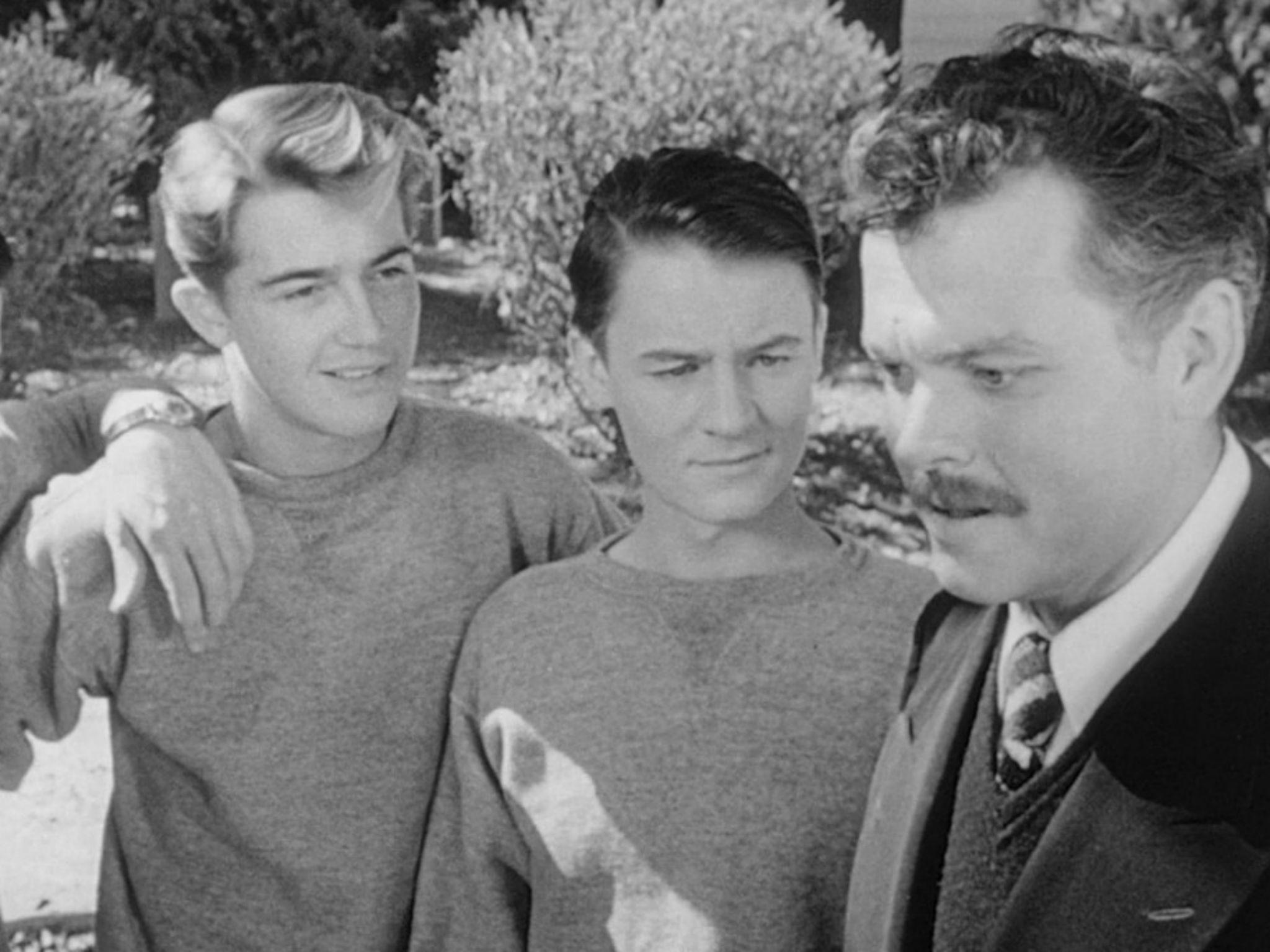Movies You Might Have Missed: The Stranger
This somewhat forgotten noir stars Edward G Robinson as a war crimes investigator and was the only film directed by Orson Welles that made a profit on release

Your support helps us to tell the story
From reproductive rights to climate change to Big Tech, The Independent is on the ground when the story is developing. Whether it's investigating the financials of Elon Musk's pro-Trump PAC or producing our latest documentary, 'The A Word', which shines a light on the American women fighting for reproductive rights, we know how important it is to parse out the facts from the messaging.
At such a critical moment in US history, we need reporters on the ground. Your donation allows us to keep sending journalists to speak to both sides of the story.
The Independent is trusted by Americans across the entire political spectrum. And unlike many other quality news outlets, we choose not to lock Americans out of our reporting and analysis with paywalls. We believe quality journalism should be available to everyone, paid for by those who can afford it.
Your support makes all the difference.Orson Welles, widely regarded as one of the greatest filmmakers ever, only directed one picture that made a profit at the time of its release. Perhaps surprisingly, it wasn’t Citizen Kane or Touch of Evil but a somewhat forgotten film noir called The Stranger (1946, available on Amazon Video).
Welles would claim this was his least favourite of his films and he took the job, his first directorial stint in four years, in a bid to prove he had the capacity to make something on schedule and under budget. He managed to achieve both aims and the result was a box office smash.
Noir legend Edward G Robinson (star of Double Indemnity and previous subject of this column The Woman in the Window) plays Wilson, a key figure in the United Nations War Crimes Commission, who will stop at nothing in his efforts to bring Nazi mastermind Franz Kindler (Welles) to justice. The war criminal has erased all evidence of his identity but Wilson releases a former associate from captivity in the astute belief that he will be led to Kindler.
It turns out the erstwhile architect of the Holocaust is now living in Connecticut, teaching at a prep school, and on the verge of marriage. Wilson arrives in town and so begins a glorious game of cat and mouse between the two men.
The Stranger deserves to be remembered, and not just as proof that Welles had the ability to deliver a genre picture par excellence. Filming began in September 1945 and this was the first Hollywood movie to present documentary footage of the Holocaust.
Welles had seen the footage in May 1945 and wrote: “No, you must not miss the newsreels. They make a point this week no man can miss: The war has strewn the world with corpses, none of them very nice to look at. The thought of death is never pretty but the newsreels testify to the fact of quite another sort of death, quite another level of decay. This is a putrefaction of the soul, a perfect spiritual garbage. For some years now we have been calling it Fascism. The stench is unendurable.”
As seems to be par for the course when it comes to a Welles picture, the studio made changes that infuriated the auteur. It might be his most traditional film but The Stranger contains plenty of trademark Welles flourishes and is an undeniably gripping thriller that finally brought the filmmaker mainstream success.
Join our commenting forum
Join thought-provoking conversations, follow other Independent readers and see their replies
Comments